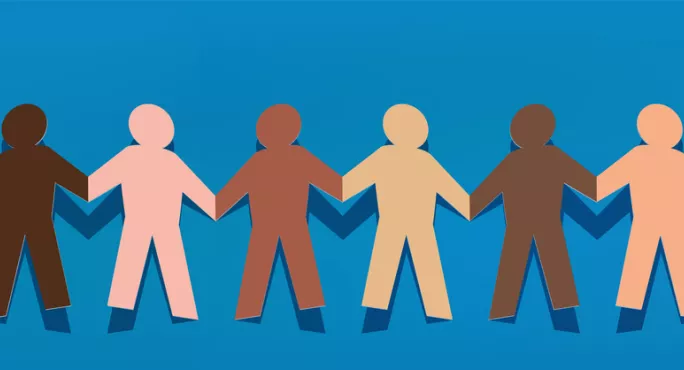Inequality in education: how to close the gaps

For the past 12 months or so, Covid, Black Lives Matter and climate change have dominated headlines and classroom discussions. It’s been an uncertain time for all of us, and particularly for our young people as they contemplate their futures, and look to navigate the adult worlds of work, training or higher education for the first time.
In their lives beyond our college gates, they will all come up against a whole host of barriers. As an educator, I’m determined to do everything I can to prepare them for these challenges and help them achieve their potential.
Not all of our young people have the same starting points, however, and we can’t underestimate just how important it is to walk the walk and not just talk the talk when it comes to equality, diversity and inclusion (EDI).
Background: Gavin Williamson must lead on anti-racism, says report
News: Diversifying leadership will improve college finances
Tes magazine: What FE colleges can do to improve diversity
The inequalities in education at a national level have been demonstrated time and time again, and I’d point anyone who wants further data on this to refer to the Black Further Education Leadership Group (BFELG).
At Hertford Regional College (HRC), we’ve come so far in terms of improvement (moving from one of the worst performers to one of the best colleges nationally), but we know that, when it comes to EDI, there’s more work to be done.
Close analysis of our data showed that, despite achievement rates improving for all learners over the past five years, there are still gaps between the white majority and a few of our minority ethnic groups. We also found that learner satisfaction rates for white learners are mostly higher than minority ethnic groups. Depending on what key performance indicator you look at, some gaps, although smaller than in the past, are bigger than others.
Big or small, we want to eradicate them all.
At HRC, we understand that we are trying to tackle the effects of long-standing societal, cultural and political issues and inequalities that have crossed generations. There’s no easy fix but we are determined, at the very least, to try.
How we’ve approached equality, diversity and inclusion
Historically at HRC, we’d always worked hard on EDI. For example, at the end of the last academic year, our principal, Tony Medhurst, commissioned unconscious bias training for all staff. The feedback has been really positive and many staff have asked for follow-up support on how to incorporate the lessons learnt into their teaching.
But over the past year, we’ve gone even further and made some long-term structural changes that, we hope, will make a real impact.
Our inclusion and impact group used to work on a centralised model, with a team of mainly senior managers meeting five times a year to discuss EDI related issues. We’ve changed this to a devolved model, with three sub groups that include teaching and support staff, managers and learners. These groups reach across all levels of the organisation and involve possibly hundreds of individuals. They are led by senior managers (change makers) within the college and each has a different area of responsibility.
The first is the strategic group, which acts as a link between governors, senior managers and the rest of the college, ensuring that everything we do is seamlessly communicated throughout the organisation. This group’s current priorities are to focus on setting and monitoring performance against strategic objectives in three main areas of operation: recruiting and teaching diverse students to reach their full potential, to be an employer of choice, and to embed inclusion in our central and professional services.
The second group, titled staff, looks at recruitment, retention and training of staff to ensure they have the tools to support our work.
The third group, students, is chaired by me, and brings together teachers, managers and learners from across the organisation to look at how we can embed themes of EDI into normal college life and teaching. We want EDI to be discussed and developed by our learners on a day-to-day basis, not just during Black History Month or when completing a specific EDI project.
One of our curriculum area managers has already got the ball rolling encouraging all learners to take part in empowerment and resilience projects aimed at supporting their transition back into college life when they, hopefully, return to some form of normality in September.
As I write, we are at the very start of this change process and it is too early to tell how successful we will be. What I am certain of is that owing to the systematic and devolved approach we are now taking, there are more of us involved in the conversation and trying to find solutions. That’s got to be a good thing.
(As a side note, I’d like to say thank you to the Education and Training Foundation and its director for diversity, Jeff Greenidge.)
Kam Nandra is the director of quality at Hertford Regional College
Register with Tes and you can read two free articles every month plus you'll have access to our range of award-winning newsletters.